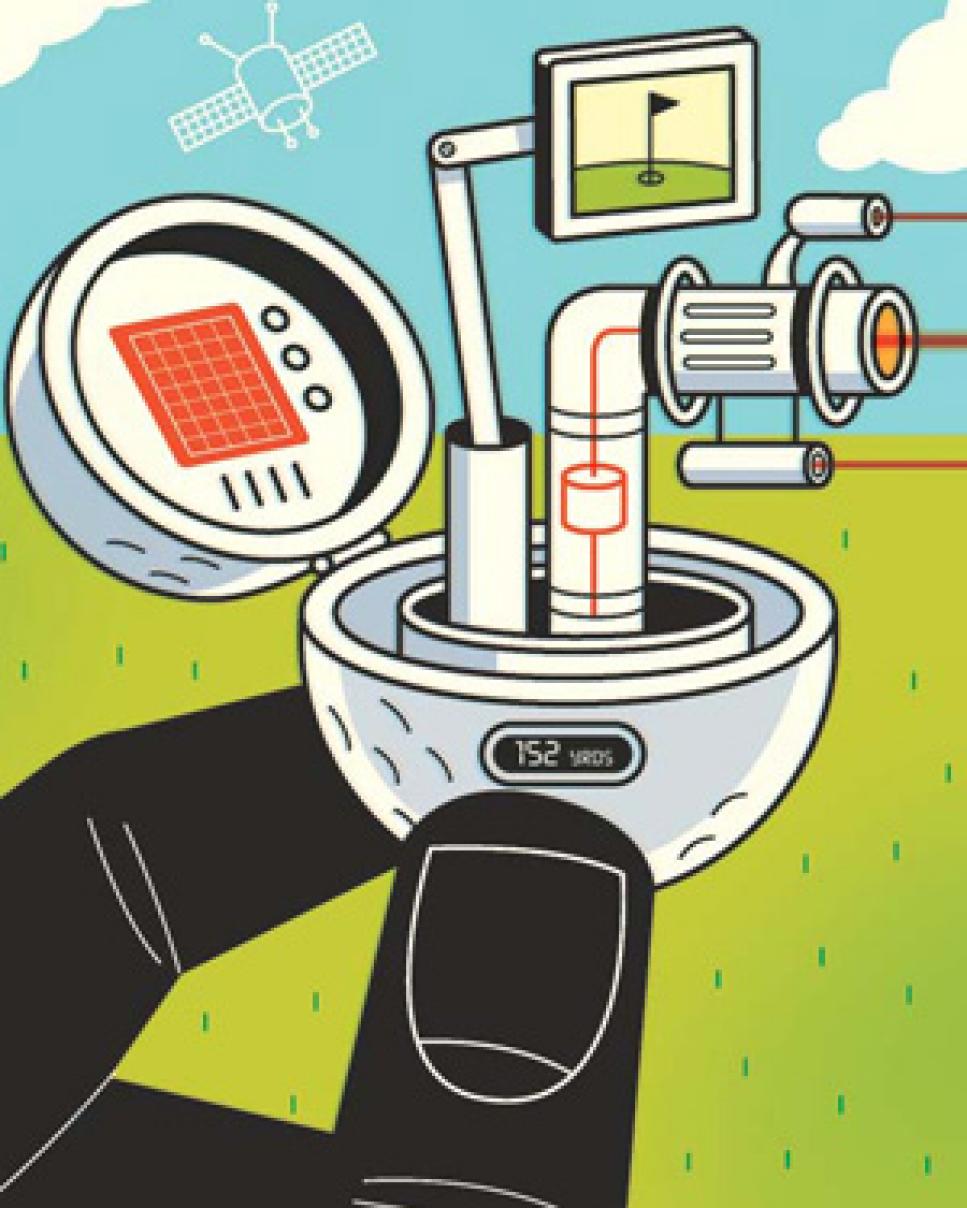Long-Distance Operators

My first encounter with non-leg-based yardage measurement was at a resort course years ago. Each cart had a monitor depicting the cart's position on the hole and its distance from the flag, and my buddies and I agreed the system made our shot-planning more precise. Then, a few holes into the round, our carts ended up side-by-side, and someone noticed that the readings on the two screens differed by a dozen yards. That raised questions not only about the state of the technology but also about how much precision our shot-planning actually required.
Since then, electronic yardage measurement has become, if not necessarily more necessary, at least more common. Now it can even be legal under the Rules of Golf (if a local rule is enacted -- see the rule book). As with most modern doodads, however, there is no single-best choice for all users.
The main decision nowadays is between laser-based devices, which measure distance with an infrared beam, and GPS devices, which monitor data from the Department of Defense's Global Positioning System. For anyone who was a kid in the '60s, the choice seems too good to be true: pocket ray gun or outer-space communicator? Perhaps inevitably, each system's fans tend to scorn the other, like PC versus Mac owners. As a representative of one company told me, "You're either a laser guy or a GPS guy."

A laser range finder is straightforward. You aim it at a flag, a hazard stake, the lip of a fairway bunker, or the rear end of the dawdling fat guy in the group ahead; press a button; read your number; select exactly the right club; and make your normal, crummy swing. Some of the better models (usually $250-$400) have nominal ranges of a thousand yards or more. That might seem like overkill to anyone who doesn't hit the ball six-tenths of a mile, but the premium devices tend to be better at picking up shorter targets, too, and, in my opinion, are worth the extra $50 or $100. (Avoid any laser with a "slope" or "incline/decline" feature, however; it's against the rules, even if the device has the word "tour" in its name or on its package.)
GPS units are more diverse. Most popular models also let you do stuff like keeping score for your foursome, tracking your club selection, and measuring your drives (you don't want to know). This past fall, I used a Callaway uPro (now deeply discounted to about $200). It let me start each hole with a TV-style flyover and gave me the option of viewing my yardages on aerial photographs. Some devices from market leader SkyCaddie (roughly $150 to $400) have a clever feature that allows you to move the flag around the green and can track the clubs you hit from different yardages -- although, as is always the case with GPS, there's still guesswork involved. I also turned my Android smartphone into a passable GPS device, by downloading the popular apps GolfCard ($10.99) and SkyDroid ($1.99).
Each technology has advantages and disadvantages. Any laser is more accurate than any GPS -- which has a margin of error of at least several yards -- but it can't see through solid obstacles, like that barn you just sliced your drive behind. GPS devices tend to be cheaper, but most require ongoing investments, either in annual fees or course downloads. They also involve varying amounts of setup. A laser, unlike a GPS, takes a fairly steady hand, but it lets you shoot anything you can see, including targets on a range. Flagsticks on some courses have small mirrors, which can make them easier to hit from farther away. A GPS can warn you about hidden hazards, but tracking satellites is brutal on batteries, especially a phone's.
Preferences divide along the handicap scale: Better players favor lasers. I find yardage helps me the most inside 150 yards with the flag in view -- and for those shots a laser is clearly superior. But I've got a foot in the other camp, too, because, in addition to my Bushnell PinSeeker 1500 (no longer made), I own a new Garmin Approach S1 Golf GPS wristwatch (about $250), which is useful not only in providing ballpark yardages at a glance but also in starting conversations.